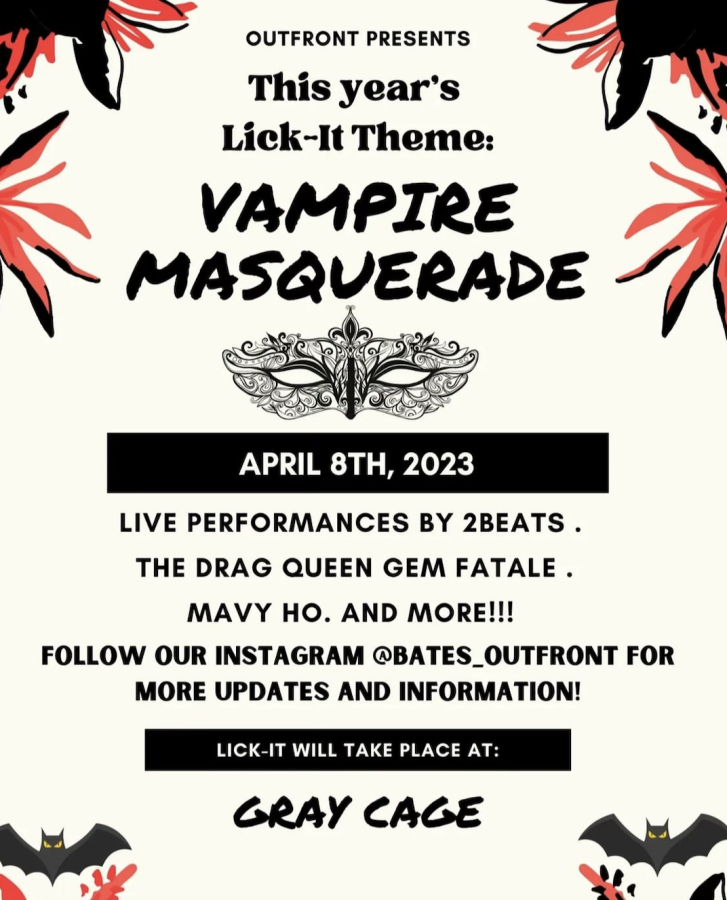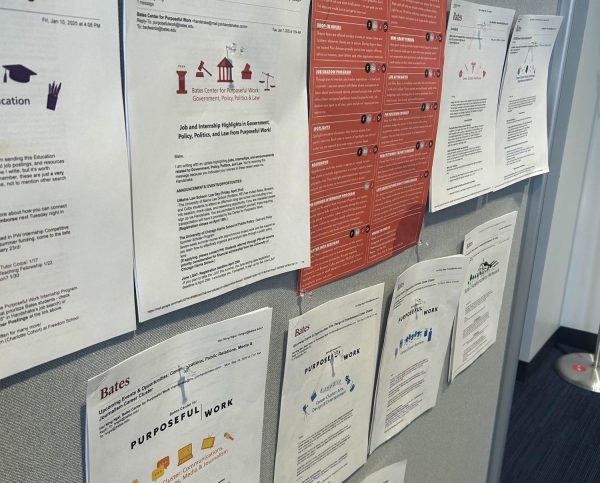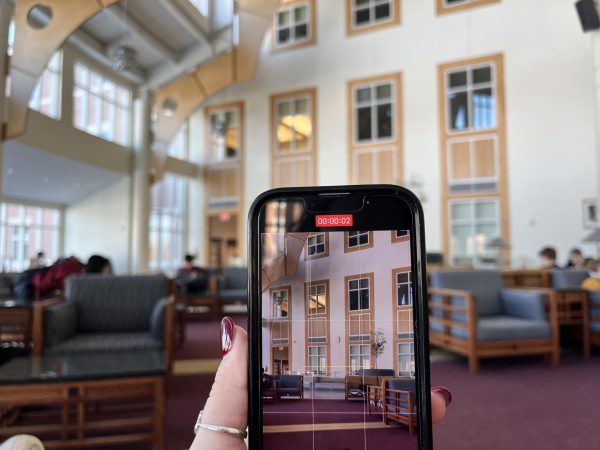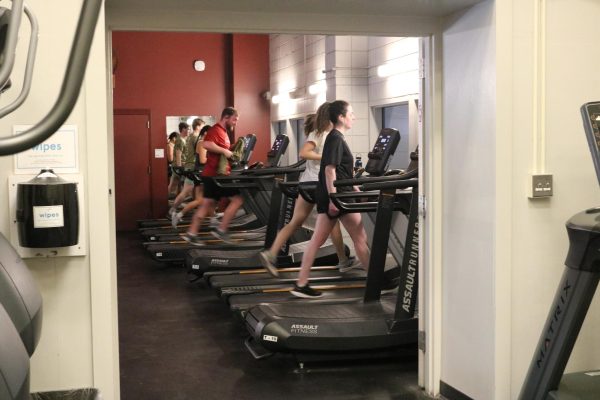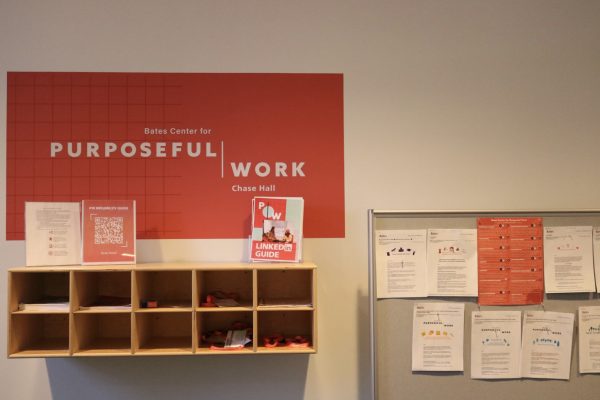What Constitutes a “Queer Space?”: Lick It and its Liberatory Potential
With Lick It approaching tonight, there’s bubbling concern amongst students over who should and shouldn’t attend the dance, decided through determinations of who is and isn’t “queer enough” or who is “too queer.” For me, the upcoming dance has catalyzed reflection on the ways queerness is expressed, negotiated and contested at Bates.
For members of the LGBTQ+ community, claiming a standard of queerness is a means of self-protection, but it can be harmful, too. When I hear these concerns, I cannot help but think of adrienne maree brown’s critique of call-out culture: “we are afraid, and we think it will assuage our fears and make us safer if we can clarify an enemy, a someone outside of ourselves who is to blame, who is guilty, who is the origin of harm.”
Accusing people of not being “queer enough” or, often more covertly, “too queer” is steeped in call-out culture and it’s distracting us from the root issue: the way that our understandings of queerness are oriented around dominant, normative understandings of gender, sexuality and race. Beyond the “distraction” of call-out culture, delineating queerness in narrow terms risks reinforcing the very structures events like Lick It attempt to challenge.
Lick It, an annual dance “by gays for gays,” was created in the mid-’90s to celebrate queer culture and sexuality. An email to students sent this week from the OutFront listserv, Bates’ student-led LGBTQIA+ club, stated that the event was first organized as an “anti-Gala,” because, “at the time, the Gala was the quintessential representation of heteronormativity at Bates. Queer students gathered together to be their truest selves the night before the Gala, to prepare for having to fit into heteronormative expectations the next day.”
Lick It was created as a space where students, specifically LGBTQ+ students, could show up as their unapologetic selves.
An article published in 2019 in the Bates Student titled “Our Lick It,” points out the ways that the dance became co-opted by students who occupy more dominant positionalities. The anonymous author writes, “Queer sexualities, genders, and cultures have been drowned out at this dance, much like on the rest of campus, by an overwhelmingly hetero and cis-normative environment.”
The author continues that queer students are no longer the “protagonists” of the event. I think what “Our Lick It” neglects to account for is that creating queer spaces at Bates is not “simple,” as the article claims, and it never has been. I’m sure these conflicts also existed when the dance first came to be. Plus, establishing definitive parameters for participation in Lick It risks further institutionalizing it. It’s essential that we interrogate how what constitutes a “queer space” is entangled in class, race and other social positionalities and power structures.
The term “queer space” is tossed around without a clear-cut definition, in part because both “queer” and “space” are nuanced ideas. I identify as “queer” and I’m constantly grappling with the merits and drawbacks of that word.
“Queer” is the best word I’ve found, so far, to explain my own experiences in all their fluidity and complexity. On a more holistic level, I think the large umbrella nature of the term gives it both its radical potential and poses challenges for the expansiveness of embodying queerness.
A few friends I’ve talked to are feeling panicked about Lick It. Some LGBTQ+ friends are worried about how to “make the best of Bates’ one gay weekend.” Straight friends are worried they’ll be “canceled” if they show up to the dance. Questioning friends want to explore the space and have fun without worrying about defining their sexuality or others making assumptions about their sexuality.
Some are worried about their outfits: if they’re too scandalous or not scandalous enough. Some feel like Lick It advertisement has had too strong an emphasis on clothing (or lack thereof) when certain LGBTQ+ identities are often fetishized and hypersexualized in popular media. One friend said in a group conversation, “you don’t need to wear a thong to be queer.” Another friend is considering leaving for the weekend to avoid the dance’s social landscape and ensuing drama altogether.
These anxieties and conversations reflect a wider discourse of what to do with homonormativity, the acceptance of LGBTQ+ identities on conditions of adopting heteropatriarchal, racist and otherwise normative ideals. Talking about those feelings with friends or seeking support from campus resources (such as SPARQ peer mentors) could be a step forward in processing Lick It and the emotional charge surrounding it. However, navigating the complex and violent systems of power imposed on marginalized individuals will never be easy.
Lick It is not a vacuum. Heterosexuality is both normative and perverse at Bates and all Bates dances. The reality is, Bates dances are historically and currently sites of violence, in the forms of, for example, racism, classism, ableism, transphobia, white beauty standards, anti-blackness, substance abuse, sexual harassment and sexual abuse. In order to prioritize the safety and well-being of our community, we cannot ignore this truth.
I don’t purport to be an expert on any of these ideas or issues. But I believe it is of utmost importance that we grasp the violence at the roots, not at the surface. We can practice exercising what it means, on an individual and community level, to hold “queer space,” and we should.
And we can also recognize that these spaces are imperfect.
Imperfection is a radical acceptance of the limitations of all identity categories in defining our being. I think imperfection is necessary to embrace in these contexts because imperfect spaces are all we have. To me, queer space is about respecting each other’s boundaries and celebrating healthy, vibrant and embodied (a)sexuality. For anyone feeling doubts or anxieties about Lick It, those emotions are 100 percent valid. So, tonight, we might attend the dance and enjoy the company of our friends. Or, we can choose to find those spaces elsewhere.
Note: I asked some people who I consider to be teachers in my life to read this piece before I published it. I wrote it in dialogue with friends, professors, classmates and mentors. I’m grateful for every single one of these visionary, resilient humans. To me, this is what practicing community is about. Our exchange of ideas, our evolving imaginations of a more just world, our collaborative activism, ground me and give me hope. There are tensions, of course, because the path ahead is not straightforward. This work of building “queer spaces,” the work of justice, is messy. It will outlast my lifetime. Please read this article, discuss it with people you care about, and as brown states, critique it “in the spirit of collective liberation.”
Your donation will support the student journalists of Bates College and help us cover our annual website hosting costs.


